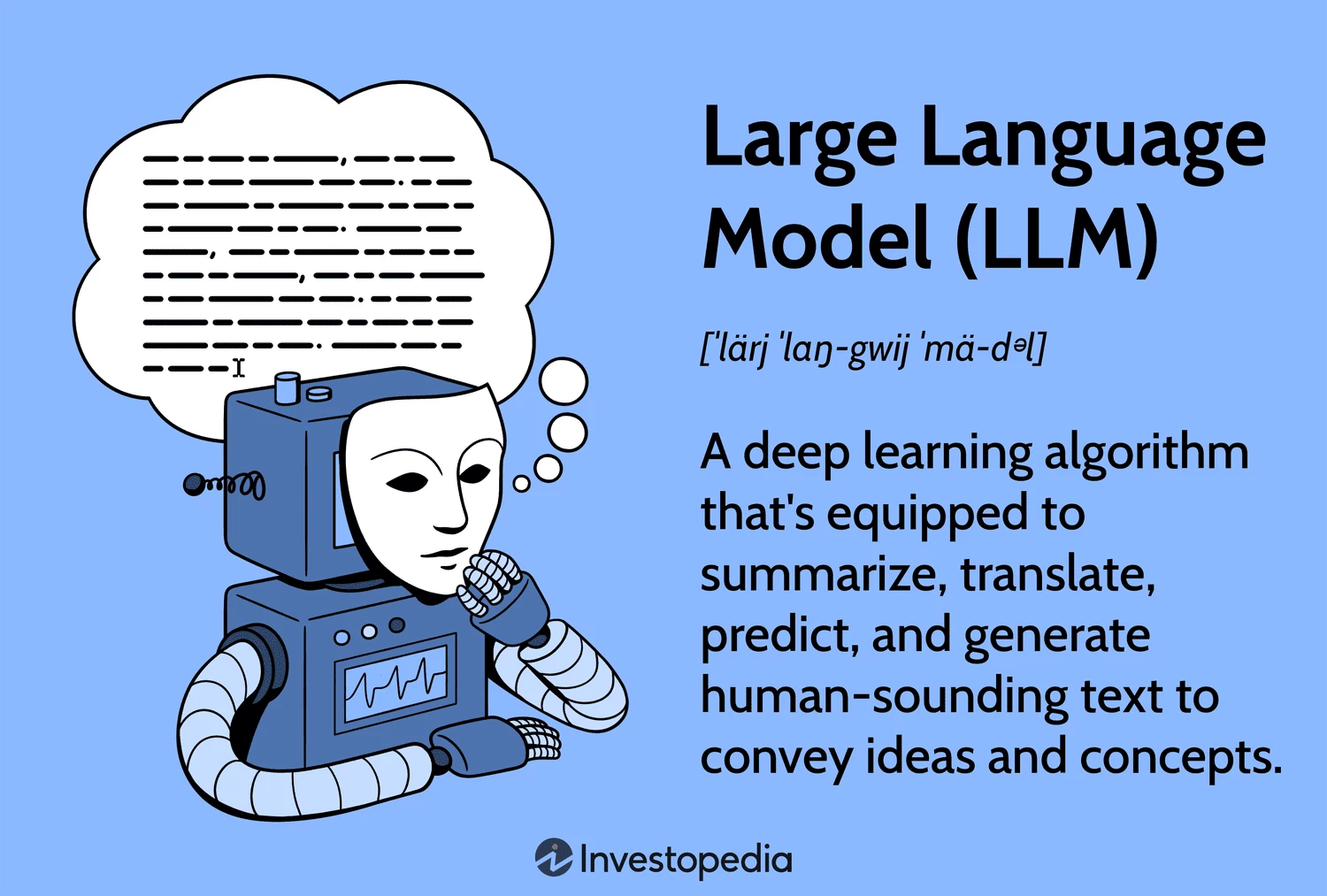Large Language Models (LLMs): Overview
A Large Language Model (LLM) is a sophisticated deep learning algorithm that excels in summarizing, translating, predicting, and generating text to communicate ideas and concepts effectively. These models depend on extensive datasets, often containing 100 million or more parameters, each representing a factor used by the model to create new content.
Large language models employ transfer learning, enabling them to leverage knowledge gained from one task and apply it to a different but similar task. They are specifically tailored to tackle common language challenges such as question answering, text classification, document summarization, and text generation.
Large language models have broad applications across various industries, primarily associated with generative artificial intelligence (generative AI).
How Large Language Models Work
Large language models operate by analyzing extensive data sets to identify patterns related to language. These models are trained using a variety of human language-based content, such as books, online pages, and news articles.
Key steps in the mechanics of large language models involve initial training with a large dataset, fine-tuning for precision, deep learning to establish word and concept connections, and generating language-based outputs with defined prompts.
Large language models function as transformer models, focusing on learning relationships in sequential datasets to understand the meaning and context of individual data points, which in the case of language models are words.
Types of Large Language Models
Various types of large language models exist, differing in their training and usage. Examples include zero-shot models, fine-tuned/domain-specific models, and edge/on-device models, each tailored for specific applications.
Popular large language models include GPT-3, GPT-4, LLaMA, and BERT, each offering unique capabilities in natural language processing and content generation.
What Are Large Language Models Used for?
Large language models are versatile tools used for content generation, summarization, translation, text classification, and chatbot applications.
These models find applications in various industries, from healthcare to marketing, enabling tasks like medical record analysis, chatbot customer service, content creation, and software code generation.
Advantages and Limitations of Large Language Models
While large language models offer efficiency and versatility, they are not error-proof. Advantages include increased user efficiency, diverse applications, and evolving technology. Limitations include content quality issues and ethical concerns.
One of the main challenges with large language models is the potential biases and quality of data they rely on, leading to biased or inaccurate responses in some cases.
What Are the Challenges of Large Language Models (LLMs)?
Large language models face data quality risks and potential biases that can impact the accuracy and fairness of their generated responses.
Concerns around stereotypical reasoning in LLMs highlight biases in racial, gender, religious, or political contexts, emphasizing the need for conscious efforts to mitigate bias in AI models.
What Are Examples of Large Language Models?
Prominent examples of large language models include GPT-3, GPT-4, LLaMA, and upcoming models like Google’s PaLM 2, demonstrating the advancement in natural language processing technologies.
What Is the Difference Between Natural Language Processing (NLP) and Large Language Models?
NLP focuses on understanding human language and plays a crucial role in AI applications like search engine ranking. Large language models, on the other hand, utilize deep learning to interpret and generate text content alongside NLP.
The Bottom Line
As large language models become increasingly prevalent, understanding their functionalities and potential impacts across various industries is crucial for a comprehensive grasp of emerging AI technologies.
Exploring the applications and challenges of large language models can lead to insights about their significance in modern technology and their evolving role in daily life.
